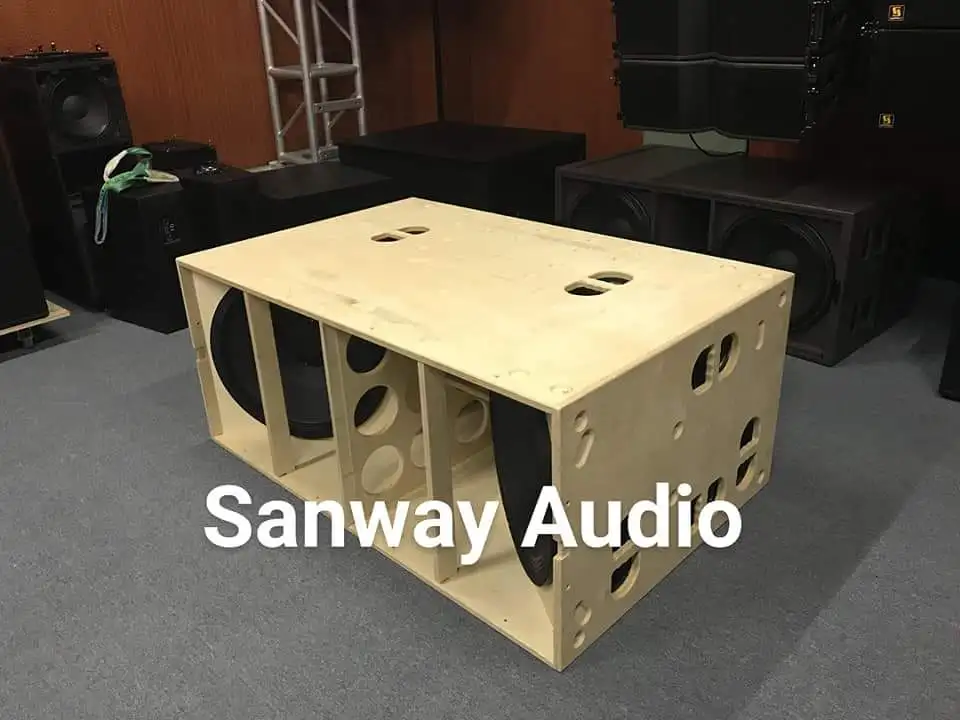

These liberated back waves do not cancel the waves emanating from the front of the speaker because - before being projected into the listening room - they have been passed through an internal duct of carefully calculated length that inverts the phase of those sound waves - i.e., it creates a wave crest where a wave trough had been before, and vice versa. The most common loudspeaker enclosures of this kind have openings - called a vent or a port - that let out the sound waves generated by the rear of the speaker cone. In consequence, they are less demanding in terms of amplifier power. Such speaker enclosures do not suppress the back radiation from the speaker but allow it to make an audible contribution. Such excess wattage, however, tends to be expensive, and fortunately there are alternative loudspeaker designs providing greater efficiency. Inefficiency in this context merely means that more amplifier wattage is needed to produce a given level of loudness. Indeed, many current speaker models of this type are noted for their overall clarity of sound - especially the absence of false resonance in the bass. Of course, to say that a loudspeaker is inefficient is not to disparage its tonal quality. Such enclosures are inherently inefficient, meaning that only a portion of the amplifier wattage is translated into audible sound.

As a result, exactly half the sonic energy produced by the speaker never reaches the listener's ears. Since the sound radiation from the rear of the speaker cone remains entirely shut up in the box, it contributes nothing whatever to the audible output. Logically enough, this is called a sealed enclosure and its simplicity counts for its widespread use. Only the front radiation from the speaker is allowed to escape into the living room. The enclosure is made airtight and lined with sound-absorbing material.
/GettyImages-155158294-Michael-Bodmann-57ec39193df78c690f7c3f53-655971bbca4640e6bfbc1cbcd66f25e6.jpg)
The simplest way to do this is to trap the rear radiation from the loudspeaker in the box. It must keep the sound radiation from the front of the cone from colliding in midair with the sound radiation from the rear of the cone. The main job of the speaker enclosure is to prevent this type of sound cancellation. The net result would be cancellation of sound, especially at low frequencies. In other words, the physical events at the front and at the back of a vibrating speaker cone are antagonistic to each other, for the vacuum in back would nullify the compression in the front. At the same time, however, it rarefies the air in back of it, creating a partial vacuum. If you translate Lord Kelvin's findings into the terms of modern loudspeaker design, this is what happens: whenever the speaker cone pushes forward, it compresses the air in front of it. The reason for this disappearance of the bass was discovered in a different context more than a century ago by Lord Kelvin, the British physicist, in his famous theoretical study of vibrating bodies. Virtually all the low notes would be missing. Without the enclosure, even the best speaker would sound thin and reedy. The speaker enclosure performs a similar function for the vibrating parts of a loudspeaker. It takes the body of the violin to transfer the acoustic energy created by the vibrating string to the surrounding air. To say that a loudspeaker without an enclosure is like a string without the violin is to stretch analogy only slightly. An understanding of the basic principles involved is helpful in evaluating loudspeakers. In fact, the speaker enclosure is an active partner in the enterprise of sound reproduction, and its design and construction strongly influence the character of the sound. At a casual glance, a loudspeaker enclosure seems just a container - simply a box.


 0 kommentar(er)
0 kommentar(er)
